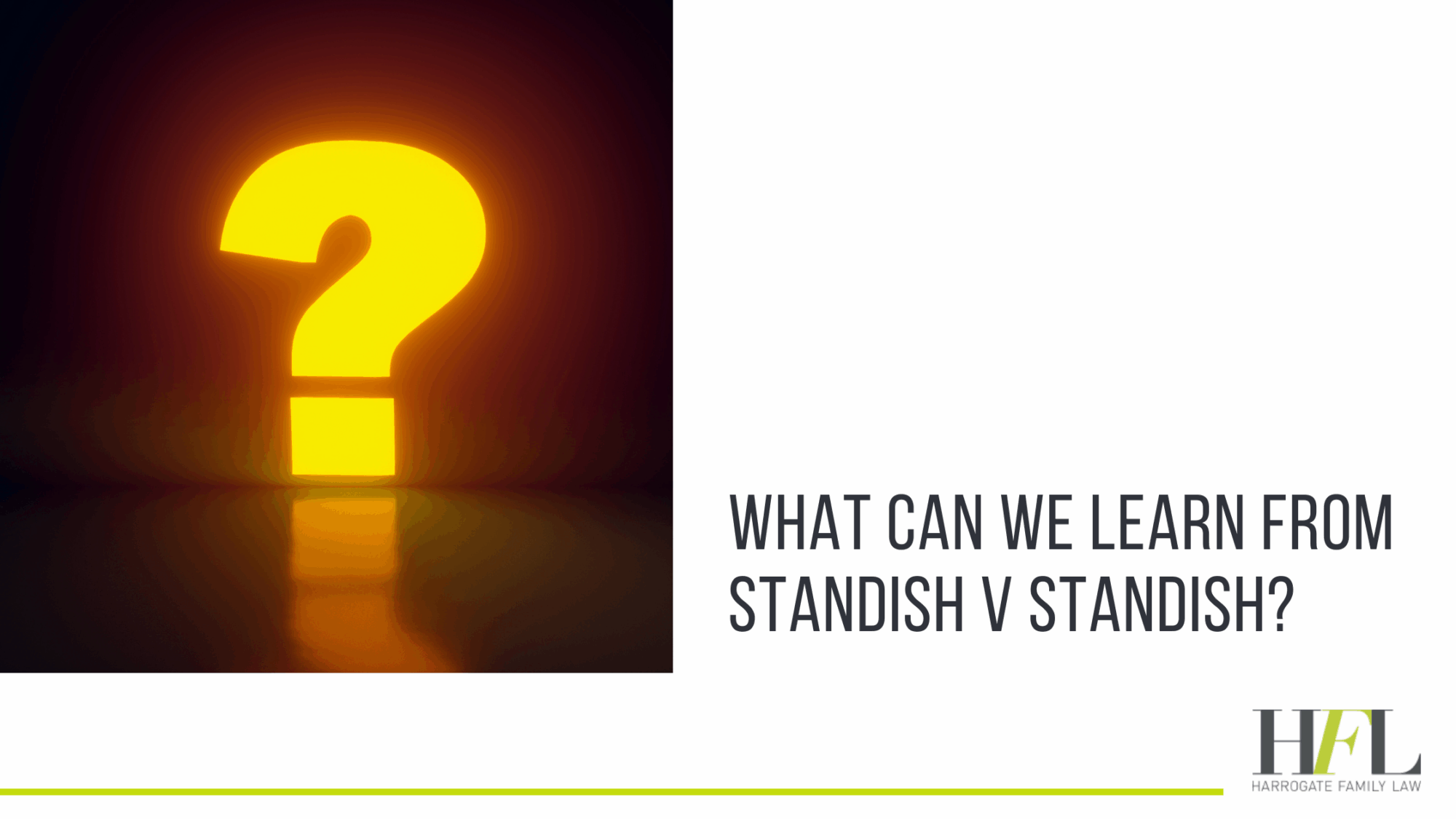The case of Standish v Standish has been a hot topic in the world of family law over the past few months, and in July this year, the court finally reached its conclusion.
Referencing several previous landmark cases before it (notably White v White [2001] and McFarlane v McFarlane [2006]), the 20-page judgment was, at its core, simple: non-marital assets will not be treated as shared assets where there’s more than enough in the pot to meet the needs of both parties.
Standish v Standish: an overview
The case threw open the definition of ‘shared matrimonial assets’. Mr Standish had gifted Mrs Standish a large sum of his total fortune, intended to be an inheritance for their children and a means to avoid inheritance tax in the UK (although a trust was never established). However, the assets given to Mrs Standish were acquired before the marriage and stemmed from Mr Standish’s successful business endeavours.
Once the couple decided to divorce, Mrs Standish argued that she wanted a 50% equal split of the total assets. While this wasn’t granted, the court did award her £45 million, ruling that the assets in Mrs Standish’s name became matrimonial assets upon transfer to her.
Mr Standish (unsurprisingly) disagreed and appealed the court’s decision. He argued that the assets were non-matrimonial and that Mrs Standish was not entitled to them. Mrs Standish also appealed, firm in her case that she was entitled to a 50% share.
Ultimately, Mr Standish was able to present enough evidence that the court ruled Mrs Standish would not receive 50% of the total marital assets.
The court gave consideration to a number of factors when reaching its conclusion, and now that we have the ruling, there are clear lessons and key takeaways for legal professionals and clients alike. So, what are they?
Wealth planning needs a family law context
Lesson one is a valuable one: The most stand-out feature of this particular case is just how important it is for couples to financially plan within a family law context – the two are not mutually exclusive.
In this case, there was no nuptial agreement – pre or post – to support the wealth planning or division on divorce. That made it so much more difficult for Mr Standish to evidence that the transfer he’d made to his wife was not intended to be a shared asset for the purpose of the matrimonial pot.
Because the assets transferred to Mrs Standish hadn’t been ring-fenced by either a pre or post-nuptial agreement, when it came to the financial remedy proceedings, they were fair game – cue very protracted and costly legal proceedings.
Just because an arrangement works from a tax perspective doesn’t mean it’s divorce-safe
What initially made sense as a ‘tax-smart’ decision wasn’t such a ‘sure thing’ later down the line when the couple decided to divorce.
The lesson? It serves as a warning to high-net-worth couples that they should engage family lawyers and wealth professionals at the point of tax and other financial planning. They shouldn’t be a crisis purchase at the point of a relationship breakdown.
The emotional side of asset protection
While the roles of the financial services professionals and solicitors are different, what we’ve learned from the Standish v Standish case is that a more holistic approach to asset protection may well have resulted in a more efficient resolution.
If Mr and Mrs Standish had entered into a prenuptial agreement, for example, the picture would have been a lot clearer. For a fair division of assets in divorce, both parties must not only be armed with all of the correct information, they must also understand the intentions and be fully aligned with the proposed outcome.
So there you have it, just a few of the lessons learned from a case that will undoubtedly be used as fair warning in future cases where matrimonial assets and who they belong to are being debated. And for a family law team that will team up with your financial advisors for a more robust future and fair outcomes, you’re in safe hands. Contact the team today.
 Andrew Meehan is a solicitor with over 20 years of experience in family law. Adept at handling complex divorce cases involving assets of £1m+, properties, trusts, and high incomes, as well as business interests, Andrew’s clients benefit from his caring and empathetic approach, as well as his sharp eye for detail. Top-ranked year on year by the Chambers Legal Directory, Andrew is described as ‘the best of the best’, and ‘absolutely superb and a technically brilliant lawyer and litigator’. To find out more about how Andrew can help you, get in touch by emailing enquiries@harrogatefamilylaw.co.uk.
Andrew Meehan is a solicitor with over 20 years of experience in family law. Adept at handling complex divorce cases involving assets of £1m+, properties, trusts, and high incomes, as well as business interests, Andrew’s clients benefit from his caring and empathetic approach, as well as his sharp eye for detail. Top-ranked year on year by the Chambers Legal Directory, Andrew is described as ‘the best of the best’, and ‘absolutely superb and a technically brilliant lawyer and litigator’. To find out more about how Andrew can help you, get in touch by emailing enquiries@harrogatefamilylaw.co.uk.






